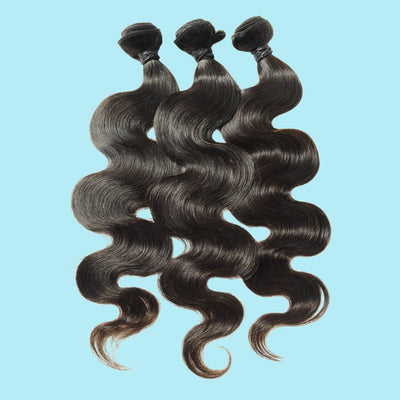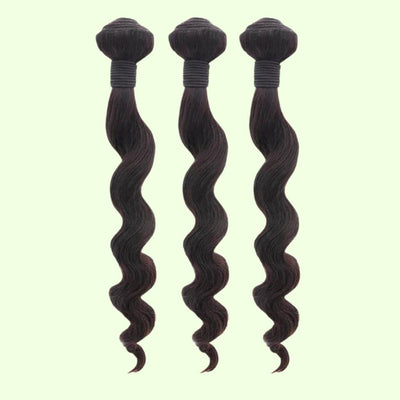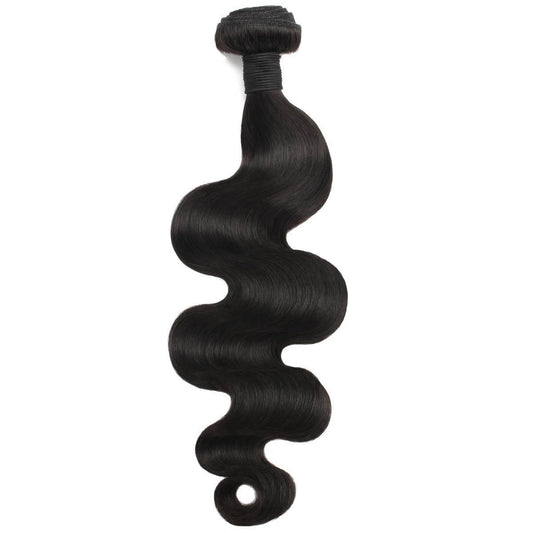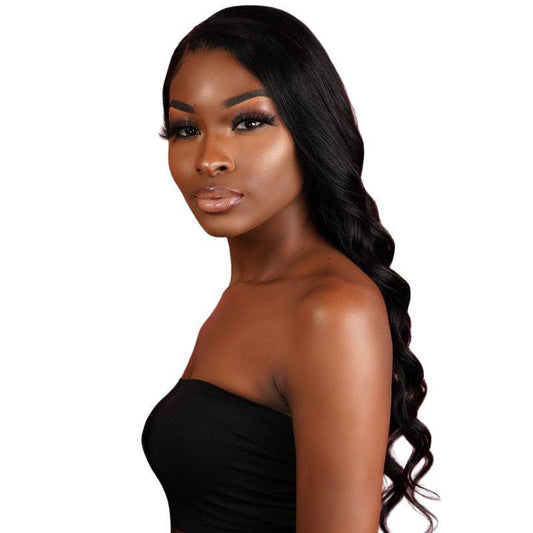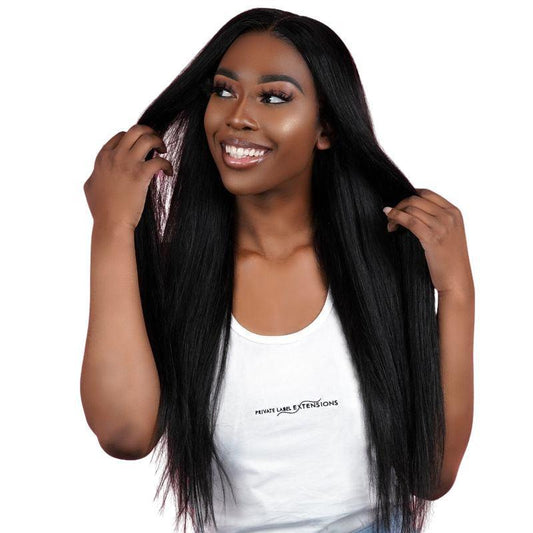1260 Memorial Drive
Atlanta, Georgia 30316
404-458-1330
Hairstyles to Avoid That Can Damage Your Edges
Mikey MoranBeing able to take care of your natural hair is a serious issue, especially if you're anything like me and love switching up your hairstyles now and then.
We all love jumbo box braids, high ponytails, and low buns, but do you want these styles to come at a cost and damage your edges in the process?
You don't want your fun and versatile look to turn into complete mayhem and constant tugging on your baby hair.
Some may not think of this, but the hair closest to your temple, nape, and forehead is most susceptible to strain and damage. 🥊
Depending on the length, style, hairdresser, and amount of time you keep your hair in, all of these factors can either make or destroy the naturally thin area of your head.
Some tips for keeping your overall tresses healthier are deep conditioning, regular wash days, or even taking vitamins; all of these methods are some of the best practices for keeping your hair looking full and in tip-top shape.
If you try the best steps necessary to maintain your baby hair and you still have no luck, we know that sometimes it comes down to the overall looks we choose to do on our tresses.
So, here is a list of hairstyles to avoid that can damage those beautiful edges.

Braids
Now, of course, braids are the most common hairstyle, and they are known for plucking and pulling out your edges.
Whether it's individuals, cornrows, or jumbo twists, whenever synthetic or real human braiding hair is in with your own, some damage can occur.
When you have big braids that can weigh down on your strands, it can cause them to pull on your baby hair.
Micro twists are by far the worst since they attach to the thinnest parts of your edges, and when it's time to take them out, they will pull your real mane along with them.
Cornrows aren't too bad if it's on your actual hair, but we have a knack for braiding the strands straight back, and, in that process, we tend to forget about our napes, which can make the hair in the back of our head, to be short and damaged.
Let's face it: braids have been in our lives since we were little kids, so there is no way we expect you to banish them from your hairstyle archive forever, but maybe take a small break from them now and then.
When you do want this style, make sure that they are loose; if the hair is pulling on your edges too tightly, it causes weak strands and damage to your follicles.
What's even worse about too-tight braids is that they can ultimately lead to hair loss or bald plates, and no one wants that love.
So, keep all of these things in mind the next time you opt for this hairstyle, and I promise you will not be disappointed.

The Forever Ponytail
We all know that one person who wears their ponytail in the same way every day, hey, that person may just be you, and we're here to help you break that habit.
This hairstyle can cause a lot of fraying and hair breakage.
We get it: ponytails are simple, quick, and easy to give you a neat and polished look in a matter of seconds, but this is probably one of the most damaging looks out there.
Scrunchies and elastic hair ties can have a tight grip and cut into your hair shaft, and this is what causes the fraying on your mane.
This rule can also apply when you put your hair up in a bun as well. If you want to throw your hair in a ponytail for a quick workout now and then, go right ahead, but if this is the constant go-to hairstyle, you may want to ease up on the high pony.
If, for some reason, you don't want to let go of wearing your ponytail, try opting for a fully fabric-coated hair tie instead of elastics, and you and your edges should be in good shape.

Tight Sew-Ins
We all know how beautiful you look and feel when you get sew-in extensions, but this may be the cause of your edges getting damaged.
The biggest mistake any of us can make is to get our hair extensions put in too tight, and this will put lots of tension on your hair follicles, which can make the strands fall out.
Sew-ins can contribute to the most common type of hair loss among African American women. It all comes down to your braiding pattern and how the stylist does your hair.
I love getting sew-ins, and I hated the "what if" of my edges would fall out. I figured out that having a netted weave cap over your braids before getting your hair done helps a ton.
The cap will help protect your baby hairs from the needle, thread, and weave in any damaging way.
So, opt for wearing human hair wigs instead; with all of the latest advancements in lace closures and 4-way parting, wigs are starting to look a lot more realistic.
The best part about this alternative is that it's quick and far less dramatic than getting a sew-in.

Slick Back Bun
If we want to keep our edges safe, we want to make sure that we avoid any hairstyle that involves constant brushing, like a slick back bun.
Brushes can cause friction on your hair that leads to breakage and split ends.
Most importantly, this process can cause your edges to pull out over time.
Brushing wet hair is especially bad, so try finger combing when you can.
Any Hairstyle with Accessories
When it comes down to protecting our precious edges, we want to make sure that we ease up and try our best to avoid dangerous hair accessories.
Certain broaches or jewels with combs can be very damaging to our baby hair. If most of your looks involve clip in extensions every day or adding cute clips or bobby pins, you may want to hold off for a few days.
These styles are a top cause for pulling on our napes and edges, and I want to keep us protected in the best way possible.

Tips
So, I have given you some hairstyles that you need to avoid when it comes down to protecting your edges.
But how about I add some basic tips to protect your tresses and hairline from any further damage when it comes to wearing extensions?
There are plenty of techniques and methods out there to help safely keep your edges.
But we decided to narrow it down to the top five, so pay close attention and be sure to take plenty of notes.
Tip #1 Try Not to Overdo Your Hairstyle
I know that you spent all your money and time on your hair, but even if it still looks fantastic and neat, don't wear your braids or extensions for 6 to 8 weeks at a time.
You should take out your weave to allow your edges and scalp to go through deep conditioning using hydrating treatments.
When excess dirt builds up in your hair follicles, it can clump your strands together and leave room for uncomfortable pulling on your mane.
The moral of the story is not to overdo the length of time you keep your hairstyle.
Tip #2 When Wearing Braids, Make Bigger Parts Around the Perimeter of Your Head
Whether you are rocking faux locks, twists, or braids, you must make sure that you or your stylist have the parts around your edges a little bigger than the ones on the rest of your head.
The reason behind this method is that your hair by the temple will be able to support the extensions better.
I know you probably think that this will make the style unattractive, but trust me, it'll look fine.
It won't be evident at all and will blend in with your look. One thing you want to make sure you don't do is overstay your braids once you get them.
You may think it sounds cute to pull them up, turn, and twist them into cool updos, which will add more stress to your hairline and edges. If you want to go for a fresh style, try tying your braids loosely.
Or even let your style hang with a different side parting. You will still look beautiful, I promise!

Tip #3 Don't Take Wash Day for Granted
Yes, I know that we get protective hairstyles because they are low maintenance and last for a very long time.
But this should not mean that you don't wash your hair at all throughout the time you have your braids or extensions on your head.
You want to make sure that you shampoo your hair one or 2 times within two weeks to keep your scalp clean and healthy.
There is constant product buildup that occurs from continual styling, and dead skin cells pile up and can affect the growth of your edges; this is why washing your hair is very beneficial.
I don't want you to think that this process is impossible. If you are wearing a weave that is a sew-in or glued-in, then try your best to separate your natural hair from your wefts the best way that you can.
Once you complete that previous step, you want to wash gently, condition, and rinse your natural hair.
Once your mane is squeaky clean, proceed with drying, combing, and styling it in your favorite way.
If you wear clip-ins, you want to make sure to take them out first before you begin to wash your hair.
Once your true roots are clean, you can dry them and reattach your extensions to your tresses.
Tip #4 Be Careful When Taking Extensions/Braids Out
The reason our edges become damaged is due in large part to the technique we use when it comes time to take them out.
Quick weaves are probably the most dangerous. The glue that we use to place the extensions on our heads can contain chemicals that lead to hair loss.
If you are a huge fan of using bonding glue, make sure that you use the recommended remover to have all of the glue safely out of your tresses.
If you rush this process and end up leaving glue in your hair, it will become almost impossible to remove it all without taking some of your beautiful strands with them.
Tip #5 Keep Braids or Extensions Loose
The biggest mistake women will make is having their extensions in too tight.
This causes extra strain and tension on the hair closest to the nape and the temple, and this will make your strands fall out.
Extensions should not be painful or cause harsh headaches, and if they are or do, that's the number one sign to know that your weave is in too tightly.
Try opting for clip-ins the next time you want extensions; they are less damaging directly because you can take them out quickly and with ease.
There is no lace glue or needling involved, which makes this method even more desirable.

Do You Have Any Edge Protection Tips?
So, there you have it, my beauties.
To sum everything up, it's all about doing the right balance when you choose your hairstyle.
You don't want to wear braids all year long, and neither do you want to have your hair in a ponytail every day of the week.
Just because experts say that a style can last up to three months doesn't mean you should keep it in for that long. 🤷🏿♀️
Make sure that you are regularly paying attention to your hairline. If you start to see any noticeable changes, take out your current hairstyle and give your mane a break.
If you take it easy on your hair, you can see instant results in growth.
If you have any edge protection tips that you live by, let us know in the comments down below.
And visit our Atlanta Hair Store to get some lace edges!

